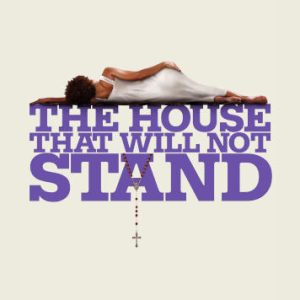
The House That Will Not Stand At The Shaw Festival
The House That Will Not Stand, an ambitious work by Marcus Gardley, now receiving a sturdy production at the Shaw Festival’s Jackie Maxwell Studio Theatre, opens a fascinating window on a little-known period of American history.
In the early decades of the nineteenth century New Orleans had a substantial population of free people of color who, in one of the enduring ironies of the history of slavery in the New World, could own slaves, and did. One such woman was Beartrice Albans (Monica Parks). Of mixed race, she was a beneficiary (if that word can be used) of the peculiar institution of plaçage, a term derived from the French word for “to place.”
Under plaçage, which was widely practiced in French America, a free woman of colour could allow her light-skinned daughters to become concubines of white men, many of whom were married to white women. It was a lesser form of slavery but one which offered a certain amount of security and money to those who would not otherwise enjoy either. Placées, as these concubines were known, had contractual guarantees of monetary support for them and any children who resulted from the arrangement.
As The House That Will Not Stand opens, Lazare Albans, the man to whom Beatrice was bound, is lying in state in her comfortable house. Apparently, he preferred her company to that of his white wife, who is nominally the heir to his estate. Beartrice has decreed a lengthy period of mourning, but there is dissension within her family.
Two of her three daughters are eager to participate in an annual masked ball at which well-to-do white men survey the current crop of mulatto women hoping to be chosen as placées. Beartrice is opposed to the whole system of plaçage and seeks a better future for her offspring. Her slave, Makeda (Sophia Walker), is restive because Beartrice’s oft-repeated promise of freedom, seemingly possible now that Lazare is dead, is still in abeyance.
Beartrice is also aware of the threat posed by New Orleans’ new owner, the United States following the Louisiana Purchase. At any moment the old French dispensation could be supplanted by America’s more brutal slave laws, as in fact it eventually was. As if that weren’t enough an enemy of Beartrice is putting it about that Lazare was poisoned.
Gardley has drawn inspiration and a certain amount of the structure from Federico Garcia Lorca’s 1936 classic The House of Bernarda Alba. Like Lorca, Gardley is a poet although he switched to drama early in his career, and indeed much of the dialog in The House That Will Not Stand has the form and feel of poetry.
Gardley packs a lot into The House That Will Not Stand, too much perhaps, including an over the top seance in the second act in which Lazare returns from the dead, a crazy aunt, and betrayal among the sisters. It makes for lumpy drama that becomes increasingly hard to digest.
Nonetheless, The House That Will Not Stand touches on many themes that still resonate in today’s world and are worth contemplating. For me, however, its greatest contribution is shining a light on a fascinating if troubling period of America’s history.
Director Philip Akin has given The House That Will Not Stand a sturdy production that uses the narrow confines of the Jackie Maxwell Studio to excellent effect, much as he did with August Wilson’s Gem of the Ocean in 2022. The sets and costumes by Sean Mulcahy and lighting by Kevin Lamotte are just right. Finally, movement director Alexis Milligan deserves a nod for an ecstatic dance number.
The cast is by and large a good one, with Monica Parks and Sophia Walker contributing powerful performances that rise above the rest.
The House That Will Not Stand continues at the Jackie Maxwell Studio Theatre through October 13, 2024. For more information and to purchase tickets visit the Shaw Festival website.
For a complete index of reviews CLICK HERE.
Don’t miss another review or blog post! SUBSCRIBE HERE.
[Image: Shaw Festival]

